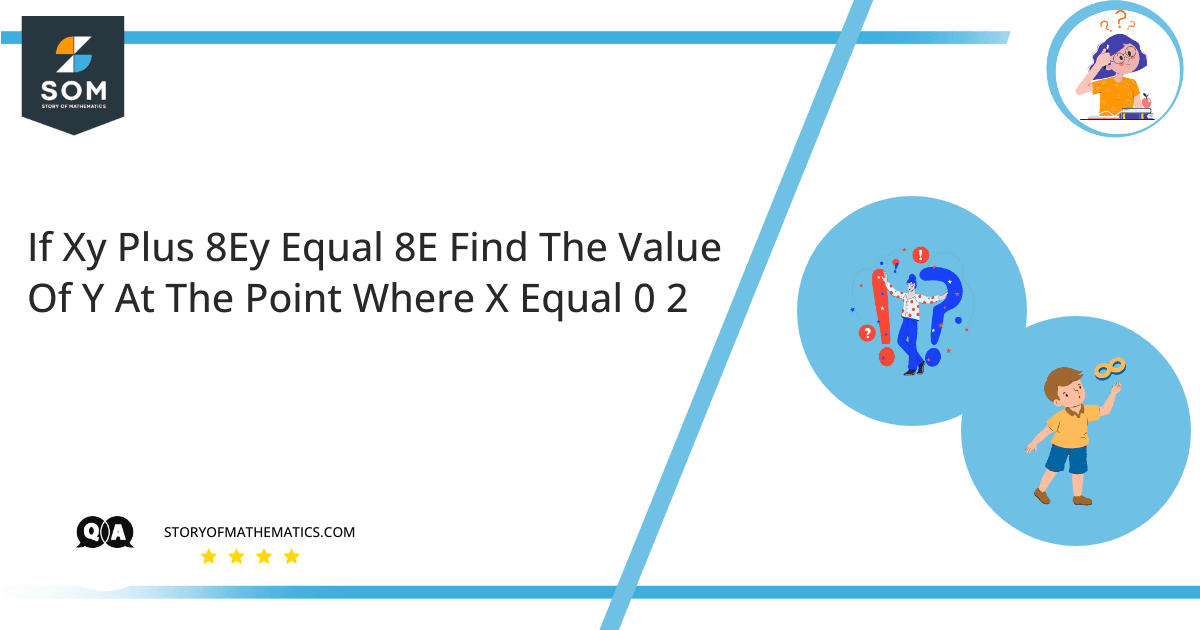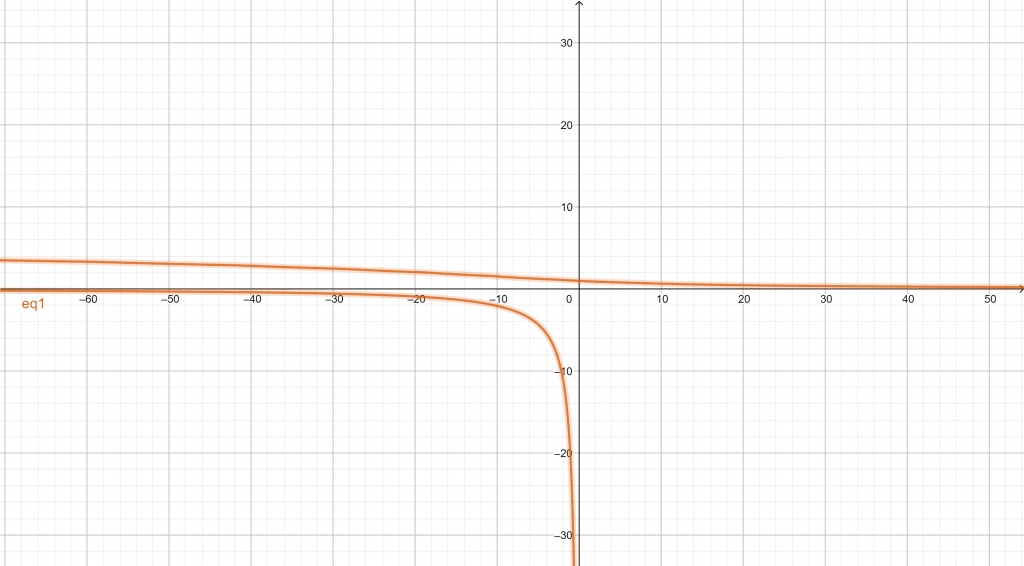
This question aims to find the value of the second derivative of the given non-linear equation.
Nonlinear equations are those which show up as curved lines when graphed. The degree of such an equation is two or more, but not less than two. The curvature of the graph increases as the value of the degree increases.
Sometimes, when an equation is expressed in $x$ and $y$, we cannot write $y$ explicitly in terms of $x$, or such type of equation cannot be solved explicitly in terms of one variable only. This case implies that there exists a function, say $y=f(x)$, which satisfies the given equation.
Implicit differentiation then makes it easier to solve such an equation where we differentiate both sides of the equation (with two variables) by taking one variable (say $y$) as a function of the other (say $x$), necessitating the use of chain rule.
Expert Answer
Given equation is:
$xy+8e^y=8e$ (1)
Substituting $x=0$ in (1), we get:
$(0)y+8e^{y}=8e$
$8e^y=8e$
$e^y=e$
or $y=1$
So, at $x=0$ we have $y=1$.
Implicitly differentiating both sides of (1) with respect to $x$,
$\dfrac{d}{dx}(xy+8e^y)=\dfrac{d}{dx}(8e)$
$xy’+y+8e^yy’=0$ (By using the product rule)
$\implies (x+8e^y)y’+y=0$ (2)
or $y’=-\dfrac{y}{x+8e^y}$ (3)
Substitute $x=0$ and $y=1$ in (3), we get
$y’=-\dfrac{1}{0+8e^1}=-\dfrac{1}{8e}$
Again differentiating (2) with respect to $x$,
$\dfrac{d}{dx}[(x+8e^y)y’+y]=\dfrac{d}{dx}(0)$
$(x+8e^y)y”+y'(1+8e^y y’)+y’=0$
or $y”=-\dfrac{[(1+8e^yy’)+1]y’}{(x+8e^y)}$ (4)
Now, plugging the values of $x,y$ and $y’$ in (4), we get
$y”=-\dfrac{\left[\left(1+8e^{1}\left(-\dfrac{1}{8e}\right)\right)+1\right]\left(-\dfrac{1}{8e}\right)}{(0+8e^{1})}$
$y”=-\dfrac{[(1-1)+1]\left(-\dfrac{1}{8e}\right)}{8e}$
$y”=-\dfrac{-\dfrac{1}{8e}}{8e}=\dfrac{1}{64e^2}$

Graph of the given non-linear equation
Example 1
Given $y=\cos x+\sin y$, find the value of $y’$.
Solution
On implicitly differentiating the given equation, we get:
$y’=-\sin x+\cos y\cdot y’$
$y’=-\sin x +y’\cos y$
$y’-y’\cos y=-\sin x$
$y’=-\dfrac{\sin x}{1-\cos y}$
or $y’=\dfrac{\sin x}{\cos y-1}$
Example 2
Given $x+4x^2y+y^2=-2$, find $y’$ at $x=-1$ and $y=0$.
Solution
Implicitly differentiate the above equation to obtain:
$1+4x^2y’+8xy+2yy’=0$
$(4x^2+2y)y’+1+8xy=0$
$y’=-\dfrac{1+8xy}{4x^2+2y}$
Now, at $x=-1$ and $y=0$,
$y’=-\dfrac{1+8(-1)(0)}{4(-1)^2+2(0)}$
$y’=-\dfrac{1+0}{4+0}$
$y’=-\dfrac{1}{4}$
Example 3
Consider the equation of the curve $2x^2+8y^2=81$. Work out the slope of the tangent line to the curve at the point $(2,1)$.
Solution
Since the slope of the tangent line to the curve is the first derivative, so implicit differentiation of the given equation with respect to $x$ yields:
$4x+16yy’=0$
$\implies 16yy’=-4x$
$\implies 4yy’=-x$
$\implies y’=-\dfrac{x}{4y}$
Now, at $x=2$ and $y=1$,
$y’=-\dfrac{2}{4(1)}$
$y’=-\dfrac{1}{2}$
So, the tangent line has the slope $-\dfrac{1}{2}$ at $(2,1)$.
Images/mathematical drawings are created with GeoGebra.
